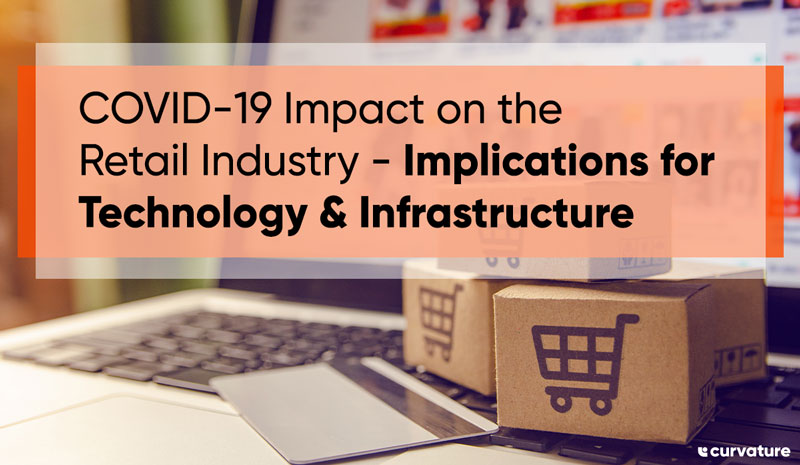COVID-19 changed consumer behavior almost instantly. One of the most impacted industries continues to be retail. The retailers deemed “essential” had to react to changing customer behavior in real-time quickly. Retailers not considered “essential” had to find alternative ways to drive revenue or make changes to their customer experience when they could reopen. Convenience has become even more important and has taken on new meaning.
Some retailers have fared better than others during this crisis as seen in the 2020 second-quarter earnings announcement. The retail industry saw a large number of store closures in 2019 even among brands considered to be successful. To add to it, the rapid changes in consumer behavior due to the pandemic required retailers to adapt and adjust (and in many cases accelerate) their approach to technology and infrastructure.
Accelerated adoption of eCommerce channel in retail
In the US, eCommerce is expected to grow by 18% in 2020, reaching 14.5% of retail sales in 2020, according to eMarketer. Major retailers like Wal-Mart and Home Depot, that have invested in technology to support the eCommerce experience, saw significant revenue growth in these channels. Many smaller specialty retailers found themselves having to quickly invest in eCommerce implementations. Retailers with mature eCommerce capabilities continue to see rapid online growth and are in fact prudently accelerating their investments in eCommerce to deliver better digital customer experience.
Leveraging data to understand customers better and improve experiences
Retailers have historically collected data from the point-of-sale and run complex analytics to understand what is selling in stores/online channel and customer preferences to specific channels. However, it is data from other sources such as location data and indoor positioning that has proven invaluable during COVID-19 in keeping both employees and customers safe. Retailers can better understand movement through the store and dwelling locations. There is even new AI technology that helps retailers and shoppers maintain social distancing.
Speeding up the transfer of data will continue to be important as retailers advance digital aspirations and provide more rich customer experiences. Forward-looking retailers are looking ahead to 5G and Wi-Fi 6 wireless transformations. These retailers are laying the groundwork now and looking at applications powered by these technologies. Additionally, investments in hybrid and multi-cloud continue to meet business needs for the movement and utilization of all this data.
Increased usage of omnichannel options such as BOPIS and Same-Day Delivery
Consumers have migrated to low-touch activities and intend to use them in the future, according to McKinsey & Company. Services such as grocery delivery, self-checkout, buy online pick up in-store (BOPIS) and store curbside pickup have seen increased adoption and usage, with consumers showing intent to continue with such services in a post-COVID-19 world. Smart retailers are continuing to invest in these options, all while listening to consumers to improve their experiences.
Improving supply chain through greater flexibility, visibility, and automation
Supply chains saw unprecedented disruption during COVID-19 with stock-outs on many grocery and cleaning products. Retailers made adjustments in five ways in near real-time, including securing supply, redirecting inventory, and adding capacity. Further, they had to do so while balancing agility and flexibility, all while delivering reliably. To mitigate further disruption, retailers are expanding data sharing with other key players in the supply chain. Manual intervention was abundant in solving these issues. A recent study by the University of Warwick and Blue Yonder with insights from over 100 global retailers points out the need for retailers to invest in creating supply chains with greater flexibility, visibility and automation and how technologies such as artificial intelligence and machine learning will play a key role in helping retailers navigate future disruption, whilst still meeting customers’ expectations.
Finding ways to pay for technology infrastructure investments
Accelerating investments in technology to address the above impacts of COVID-19 is critical not only for survival but also for growth. To fund these technology investments, retailers are looking inward to squeeze costs out of IT infrastructure and operations. Curvature is seeing increased demand in consulting services to analyze IT spend and utilization of currently consumed infrastructure services and generate suggestions for near, short, and long-term cost optimization. Curvature has found that many retail clients are rethinking their infrastructure services and looking at services like Digital Integrated Infrastructure Services Platform (D2S) to remain flexible while the business drives innovation and is cost-effective.



